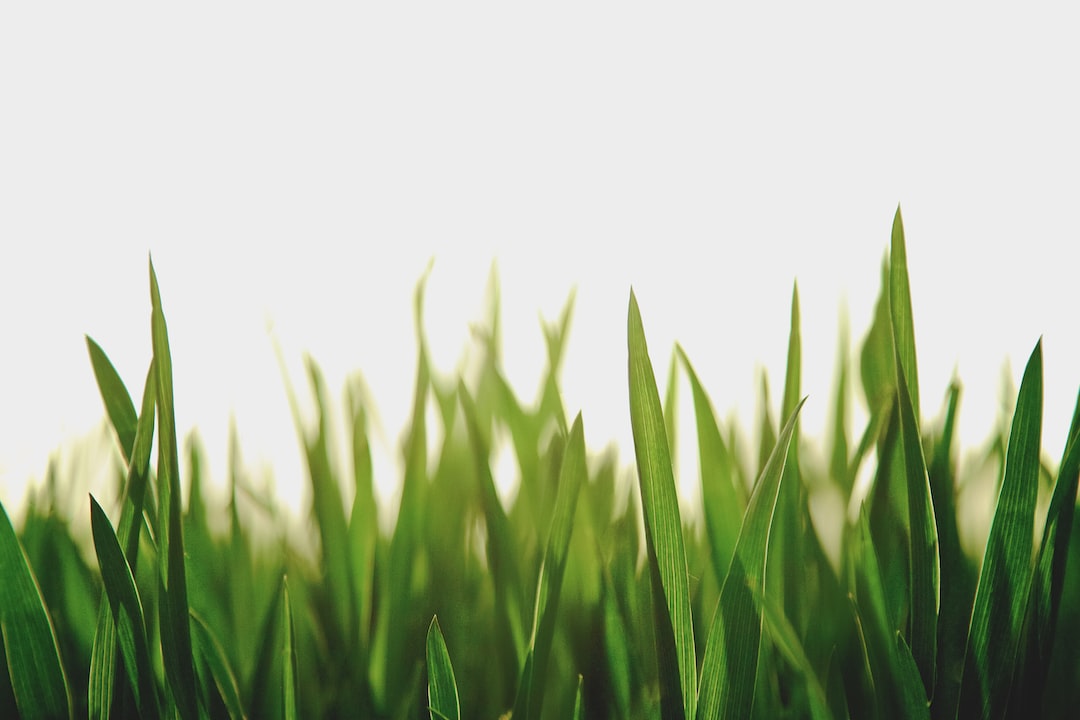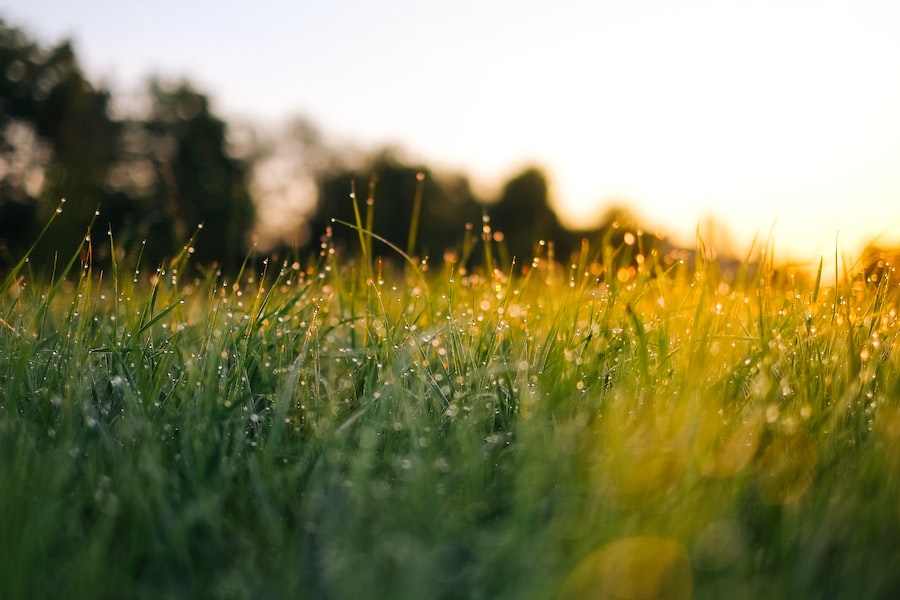Banishing Johnson Grass: Tips on How to Eradicate this Invasive Weed

Johnson Grass (Sorghum halepense) is a highly invasive weed that poses a significant threat to gardens, fields, and ecosystems. Originally from the Mediterranean region, it was introduced to the United States as a forage crop in the 19th century. However, its aggressive nature and ability to spread quickly have made it a major problem for farmers and gardeners alike. In this article, we will explore the characteristics of Johnson Grass, the dangers it poses to agriculture and livestock, and various methods for controlling and eradicating it.
Key Takeaways
- Johnson Grass is an invasive weed that can quickly take over gardens and pastures.
- It is important to identify Johnson Grass by its tall stature, purple seed heads, and distinctive leaves.
- Johnson Grass can harm livestock by causing nitrate poisoning and reducing forage quality.
- Prevention is key to stopping the spread of Johnson Grass, including proper mowing and avoiding contaminated soil.
- Chemical control, natural remedies, and mechanical removal are all effective methods for eliminating Johnson Grass, but timing is crucial for maximum effectiveness.
Understanding the Threat: What is Johnson Grass and Why is it a Problem?
Johnson Grass is a perennial grass that can grow up to 10 feet tall. It has long, narrow leaves with a prominent midrib and a dense, fibrous root system. The plant produces large, feathery seed heads that can contain thousands of seeds. These seeds are easily dispersed by wind, water, animals, and human activities such as mowing or tilling.
The invasive nature of Johnson Grass is what makes it such a problem. It can quickly colonize an area, outcompeting native plants for resources such as sunlight, water, and nutrients. This can lead to a loss of biodiversity and disrupt the balance of ecosystems. In addition, Johnson Grass is highly adaptable and can thrive in a wide range of soil types and environmental conditions.
Identifying Johnson Grass: Characteristics and Appearance of this Invasive Weed
Johnson Grass can be identified by its physical characteristics. The leaves are long and narrow, with a prominent midrib that runs down the center. They are usually green but can sometimes have a reddish tint. The plant has a dense, fibrous root system that can extend several feet into the ground.
In terms of appearance, Johnson Grass can grow up to 10 feet tall and has large seed heads that resemble feathers or plumes. These seed heads can vary in color from green to purple, depending on the stage of growth. The seeds themselves are small and brown.
To identify Johnson Grass in your garden or field, look for the characteristic leaves and seed heads. It is important to act quickly if you spot Johnson Grass, as it can spread rapidly and become difficult to control.
The Dangers of Johnson Grass: How it Harms Your Garden and Livestock
| Topic | Description |
|---|---|
| What is Johnson Grass? | A tall, invasive grass species that can grow up to 8 feet tall and has a deep root system. |
| How does it harm your garden? | Johnson Grass can outcompete other plants for nutrients and water, reducing crop yields and causing soil erosion. |
| How does it harm livestock? | Johnson Grass can be toxic to livestock, causing weight loss, decreased milk production, and even death in severe cases. |
| How to control Johnson Grass? | Methods include mowing, herbicides, and manual removal of the roots. It’s important to act quickly to prevent it from spreading. |
Johnson Grass poses several dangers to gardens and livestock. One of the main concerns is its negative impact on crop yields. The aggressive nature of Johnson Grass allows it to outcompete crops for resources, leading to reduced yields and lower quality produce. In addition, the dense growth of Johnson Grass can make it difficult to harvest crops and can interfere with farm machinery.
Another danger of Johnson Grass is its toxicity to livestock. The plant contains high levels of nitrates, which can be toxic if ingested in large quantities. Livestock that graze on Johnson Grass can develop nitrate poisoning, which can lead to symptoms such as rapid breathing, weakness, and even death if not treated promptly.
Furthermore, Johnson Grass can also pose a fire hazard. The dry, fibrous nature of the plant makes it highly flammable, especially during periods of drought or high temperatures. In areas where Johnson Grass has taken over, the risk of wildfires can increase significantly.
Prevention is Key: Tips to Keep Johnson Grass from Spreading
Preventing the spread of Johnson Grass is crucial in controlling its invasive nature. There are several key steps you can take to prevent its spread:
1. Proper land management techniques: Implementing proper land management techniques can help prevent the establishment and spread of Johnson Grass. This includes practices such as regular mowing, tilling, and cultivation to disrupt the growth cycle of the weed.
2. Avoiding contaminated seed and hay: Be cautious when purchasing seed or hay, as they can be a source of Johnson Grass contamination. Make sure to buy from reputable sources and inspect the material for any signs of Johnson Grass before introducing it to your garden or field.
3. Regular monitoring and removal of new growth: Regularly inspect your garden or field for any signs of Johnson Grass. If you spot any new growth, remove it immediately to prevent it from spreading further.
Chemical Control: Using Herbicides to Eliminate Johnson Grass

Chemical control is often necessary to effectively eliminate Johnson Grass. There are several herbicides that are effective against this invasive weed, including glyphosate, imazapic, and sethoxydim. It is important to choose the right herbicide for your specific situation and follow the manufacturer’s instructions for proper application.
When using herbicides to control Johnson Grass, it is important to apply them at the right time and in the right conditions. Typically, herbicides are most effective when applied during the plant’s active growth phase, which is usually in late spring or early summer. It is also important to consider weather conditions such as temperature and rainfall, as these can affect the effectiveness of the herbicide.
Safety precautions should always be taken when using herbicides. Wear protective clothing, gloves, and eyewear, and avoid spraying on windy days to prevent drift. It is also important to follow any restrictions or guidelines set by local authorities or regulatory agencies.
Natural Remedies: Non-Toxic Ways to Get Rid of Johnson Grass
If you prefer non-toxic methods for controlling Johnson Grass, there are several organic remedies that can be effective. These include:
1. Use of mulch and cover crops: Mulching around plants can help suppress the growth of Johnson Grass by blocking sunlight and preventing seed germination. Cover crops such as buckwheat or rye can also be planted to compete with Johnson Grass and prevent its spread.
2. Companion planting: Planting certain companion plants can help deter the growth of Johnson Grass. For example, planting clover or alfalfa alongside crops can help suppress the growth of Johnson Grass by competing for resources.
3. Manual removal: Hand pulling or digging up Johnson Grass can be effective for small infestations. Make sure to remove as much of the root system as possible to prevent regrowth.
Mechanical Removal: Manual Techniques for Eradicating Johnson Grass
Mechanical removal is another option for eradicating Johnson Grass. This involves physically removing the weed using tools or machinery. Some common techniques include:
1. Hand pulling and digging: For small infestations, hand pulling or digging up Johnson Grass can be effective. Make sure to remove as much of the root system as possible to prevent regrowth.
2. Mowing and cutting: Regular mowing or cutting of Johnson Grass can help control its spread by preventing seed production. However, it is important to mow or cut the grass before it reaches the flowering stage to prevent the spread of seeds.
3. Use of tillage equipment: In larger areas, the use of tillage equipment such as plows or cultivators can be effective in removing Johnson Grass. This method disrupts the root system and prevents regrowth.
Timing is Everything: When to Attack Johnson Grass for Maximum Effectiveness
Timing is crucial when it comes to controlling Johnson Grass. The best time of year to control Johnson Grass is during its active growth phase, which is usually in late spring or early summer. At this time, the plant is actively taking up nutrients and is more susceptible to herbicides and mechanical removal.
For herbicide application, it is important to follow the manufacturer’s instructions and apply the herbicide when the plant is actively growing and not under stress. This will ensure maximum effectiveness and minimize damage to desirable plants.
Maintenance and Monitoring: Keeping Johnson Grass at Bay Once it’s Gone
Once you have successfully eradicated Johnson Grass, it is important to maintain regular monitoring and implement proper land management techniques to prevent re-infestation. Regularly inspect your garden or field for any signs of new growth and remove it immediately. Implementing practices such as regular mowing, tilling, and cultivation can help disrupt the growth cycle of Johnson Grass and prevent its establishment.
Getting Help: When to Call in the Professionals for Johnson Grass Removal
In some cases, Johnson Grass may become too difficult to control on your own. Signs that it may be time to call in the professionals include large infestations, repeated regrowth despite your efforts, or if the weed is posing a threat to your crops or livestock.
Hiring a professional for Johnson Grass removal is important for safe and effective eradication. They will have the knowledge, experience, and equipment necessary to tackle large infestations and ensure that the weed is completely eliminated.
In conclusion, Johnson Grass is a highly invasive weed that poses a significant threat to gardens, fields, and ecosystems. Its aggressive nature and ability to spread quickly can lead to reduced crop yields, toxicity to livestock, and increased fire hazards. However, with proper identification, prevention measures, and control methods such as chemical, natural, and mechanical removal, Johnson Grass can be effectively controlled and eradicated. Taking action to control Johnson Grass is crucial for the health of your garden, livestock, and ecosystem.



